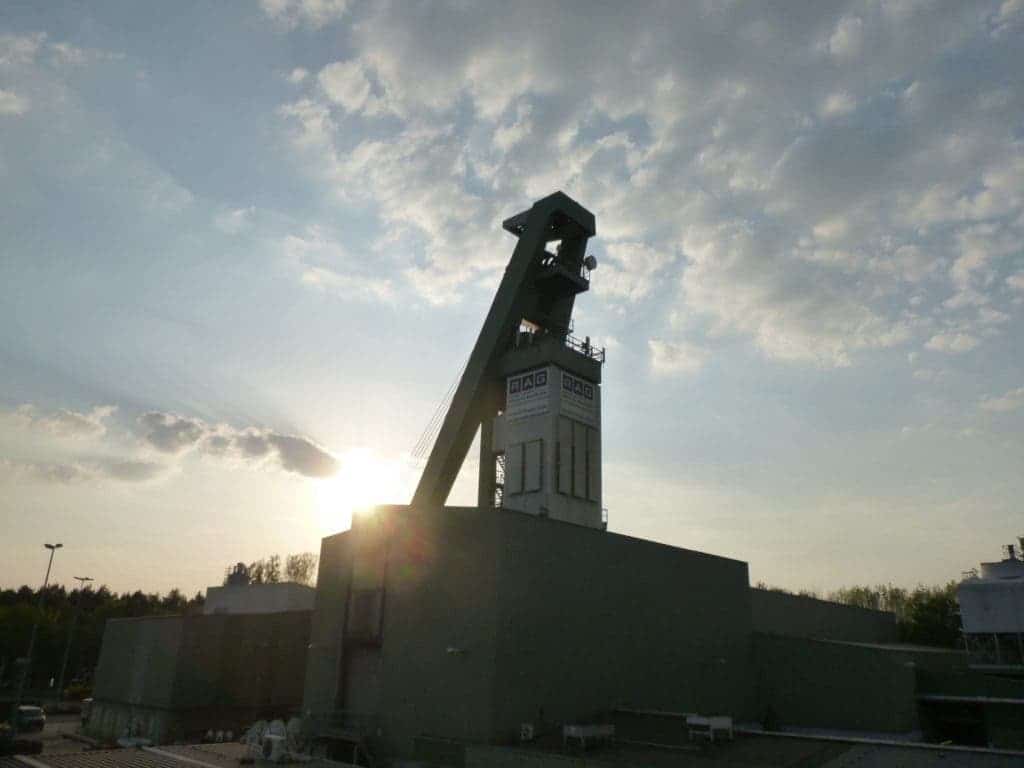On December 21st, Germany closed down its last black coal mine.

For almost two centuries, miners have been extracting coal from pits in Germany’s Ruhr valley, which the country used to power its once-burgeoning steel mills and produce electricity. It’s largely thanks to coal that Germany stepped out of the Industrial Revolution as an industrial powerhouse. Today, the country is the wealthiest in Europe, by a high margin, and the 4th largest economy in the world.
But coal has long been on the tail-end of its lifecycle, bleeding money from subsidies and poisoning an environment that is chocking on its fumes. Just a few days ago, Germany closed its last coal exploitation.
The closing ceremony of the Prosper-Haniel mine involved the transfer of a football-size chunk of coal — the last lump of black coal mined from the facility — by a group of miners to Frank-Walter Steinmeier, Germany’s President. The gift was joined by the words “Glueck Auf,” a traditional miners’ greeting, which roughly translates as “good luck”, alluding to the uncertainties and perils that miners face every day.
“A piece of German history is coming to an end here,” Mr. Steinmeier told an audience during the closing ceremony. “Without it, our entire country and its development over the past 200 years would have been unthinkable.”
The Prosper-Haniel mine in the western city of Bottrop used to be part of a network of mines that fed the Ruhr Valley’s hungry steel mills and various other industries. At its peak, during the 1950s, coal mining in the Ruhr employed half a million people. Today, just a couple of thousand people are active in the industry.
In time, however, imported coal proved to be more economically sound and, one by one, the Ruhr’s mines shut down. Since 1998, the coal mining industry received 40 billion euros ($46 billion) in federal funds. In 2007, the government decided that this huge money leak had to be plugged and ordered the gradual phase-out of German coal mines. Miners themselves were promised early retirement or retraining for work in other industries on the government’s dime.
To ease the post-coal transition, the city of Bottrop is offering subsidies to companies and workers who would like to do business there. Already, Bottrop is making good use of local attractions, including a horror maze with a haunted coal shaft, a movie-themed amusement park, and the world’s longest indoor ski slope.
Coal will still be strong for decades in Germany
This isn’t exactly the end of coal mining in Germany. The 150-year-old Prosper-Haniel mine was the last deep-shaft coal mine operating in the country. However, there are open-cast lignite, or brown coal, mines still in operation in Germany. These will ultimately be shut down in the coming years.
And while no more coal mines in Germany sounds like an environmental victory, the reality is that this doesn’t change much — not if you measure progress by fewer carbon emissions. Germany still gets two-fifths of its power by burning coal — a resource which it now shuttles from Russia, the U.S., and Colombia. This coal will likely continue to arrive in Germany for at least two decades, which is the time the government estimates it will take to shut down its last 120 remaining coal-fired power plants. It might take even longer if the country goes forward with its plan to close down all of its nuclear power plants by 2022.
In order for Germany and other countries in its position (i.e. the United States or the United Kingdom) to fully jump off the fossil fuel bandwagon, renewable energy (currently 35% in Germany) needs to grow a lot — and fast. The biggest challenge right now is storage, namely finding a way to make huge batteries at scale cheaply enough to compete with conventional baseline power. Only when energy generated by the sun and wind can be reliably stored and delivered will coal and oil disappear for good.


